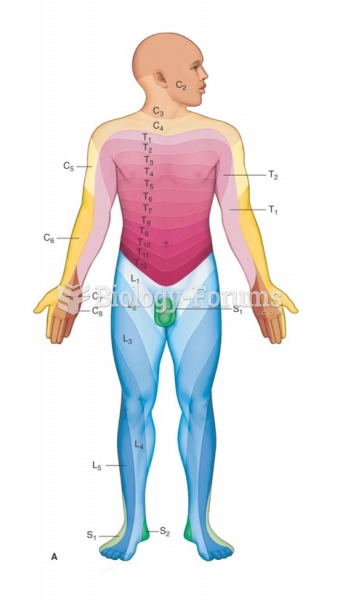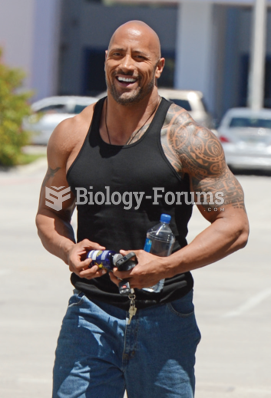Answer to Question 1
The body's first adjustment to fasting is to use the liver's glycogen for needed fuel. (The glycogen in muscles is reserved for the muscles' own useand they do use it.) The liver's glycogen, remember, is the body's source of blood glucose to fuel brain and nerve activities. Ordinarily, the brain and nerves can use no other fuel, but after about a day without food, the primary supply is gone. Where, then, does the body turn to keep the nervous system going? Whatever it has to do, it will do, for the nervous system runs the body, and when it stops, the body dies.
An obvious alternative source of energy is the abundant fat stores that most people carry. At first, this fat is of no use to the nervous system. The muscles and other organs can use fat as fuel, but the nervous system ordinarily cannot. Nor can the body convert this fat to glucose, because it possesses no enzymes to do so. It does, however, possess enzymes to convert protein to glucose.
When the fast continues, the body turns to its own lean tissues to provide the necessary supply of glucose. One reason people lose weight so dramatically within the first three days of a fast is that they are devouring their own protein tissues as fuel. Because protein contains only half as many calories per pound as fat, it disappears twice as fast. Also, with each pound of body protein, three or four pounds of associated water are lost. This same process accounts for the rapid weight loss seen in the early stages of a low-carbohydrate diet.
If the body were to continue to consume itself at this rate, death would ensue within about 10 days. After all, the liver, the heart and skeletal muscles, the lung tissue, and the blood all vital tissuesare being burned as fuel. (In fact, fasting or starving people remain alive only until their body fat is gone or until half their lean tissue is gone, whichever comes first.) But now the body plays its last trump card: It begins converting fat stores into a form it can use to help feed the nervous system and so forestall the end. This is known as ketosis.
Answer to Question 2
A wide range of weights is compatible with good health. Within this range, the definition of desirable or healthful weight is up to the individual, depending on such factors as family history, occupation, physical and recreational activities, and personal preferences. To determine if your weight is a healthful weight for you:
1 . Calculate your body mass index (BMI).
2 . Determine if your fat distribution is associated with health risks. Measure your waist circumference by placing a tape measure around your waist just above your belly button.
3 . Is your weight affecting your health? Do you have any of these weight-related health problems or risk factors?
Heart disease High LDL-cholesterol Osteoarthritis Cigarette smoking
Type 2 diabetes Low HDL-cholesterol Recurrent gallstones Sedentary lifestyle
High blood pressure High triglycerides Sleep disturbances
Male > 45 years or postmenopausal female
4 . How does your current weight measure up to these considerations?
If your BMI is acceptable for good health and if your waist measurement is not high, you will want to maintain this weight. If you need to lose weight or gain weight, consider the tips offered throughout this chapter for healthfully changing your weight.
You should consider losing weight if:
Your BMI is 30 or greater.
Your BMI is 25 to 29 and you have two or more of the weight-related health problems or risk factors listed above.
Your waist circumference exceeds 40 inches (for men) or 35 inches (for women) and you have two or more weight-related health problems or risk factors.
Weight loss is optional for you if your BMI is 25 to 29 and you do not have two or more weight-related health problems (particularly if your BMI is under 27 or you have large muscles and bones).







